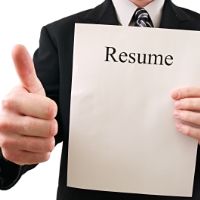Once you've received the call from an employer inviting you in
for an interview, the real preparation begins. Prior to an interview,
candidates should research the company so they can not only answer
questions, but have questions ready to ask the hiring manager as well.
The interview is where the job candidate and employer get to know each other. Think of it like dating. While a job interview is in a professional setting and the outcomes are different, the intentions are the same. You've exchanged information because you think there might be a connection, and now you're ready for your "first date." As much as you want to make a good first impression, the employer needs to make a good impression, too.
Just like a first date, you don't want one person to dominate the conversation and ask all the questions. It should be a balanced dialogue, and you should ask questions that get to the heart of the matter: Who is this employer, and why should I work for this company?
The right questions to ask
Alan Guinn, managing director and CEO of The Guinn Consultancy Group, works with employers every day. He recommends that recruiters listen for these 10 questions from job applicants to see if they've done their homework and truly want the position:
1. I've been told that I work very well as a team member. What are some of the ways your company encourages teamwork?
2. We all know how important job satisfaction is to everyone. I want to be happy in any role. Is the company committed to promotion from within, whenever possible?
3. I love your published mission and values. How are these reflected in day-to-day life at the company? Can you share some examples with me?
4. If your son, daughter or a friend was looking for a job, would you recommend working for this company? Why?
5. What do you think distinguishes this company from its competitors, both from a public and employee perspective?
6. How often do you speak with your C-level officers? When you do, what do they normally ask you? Do they ask for your opinion?
7. How does the company demonstrate a sense of pride in its employees? Can you help me understand what it looks for in return?
8. Are there paid, ongoing learning opportunities offered at my level of job responsibility? What obligations do I have if I elect to take advantage of them?
9. What does the company expect in the way of personal and professional growth for a person hired into this position?
10. Does the company value a difference in work and personal time, or does it blur the responsibilities between the two?
Think about your goals first
Don't feel obligated to walk into the interview with a set number of questions, but these give you an idea of the right questions to ask. Also think of the questions in terms of your career and personal goals. If you're moving into a role with more responsibility, how will that affect what questions you ask? If you're starting a family soon, what do you want to know about the company's commitment to work/life balance?
Thoughtful planning and preparation for an interview will not only help you feel more confident but will also leave a great impression on the person interviewing you.





